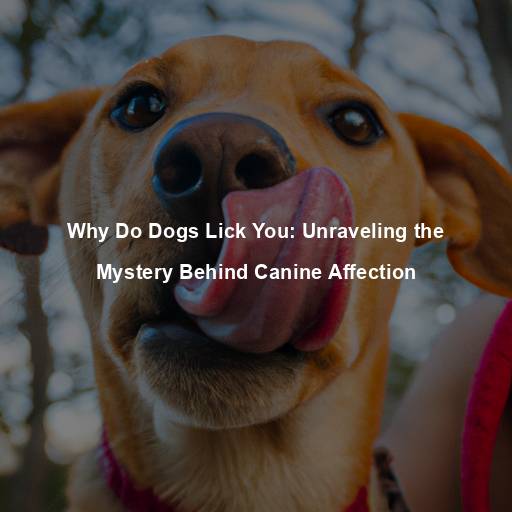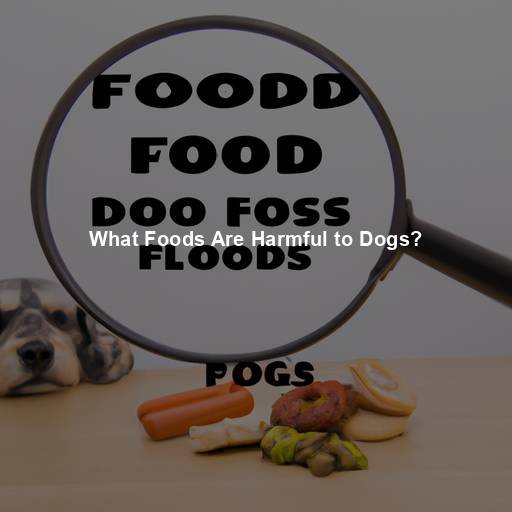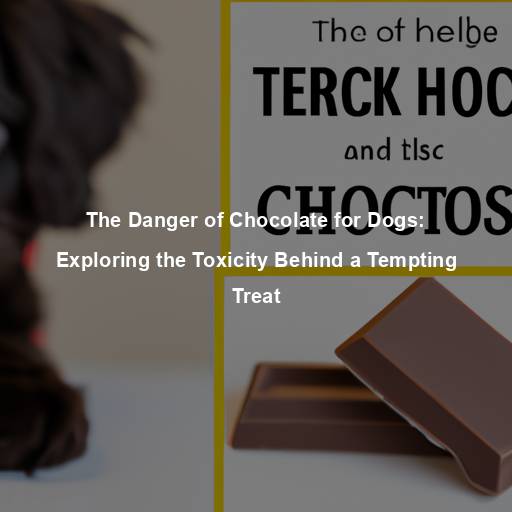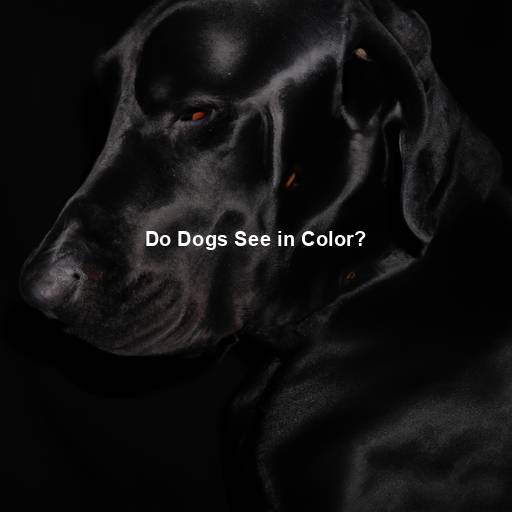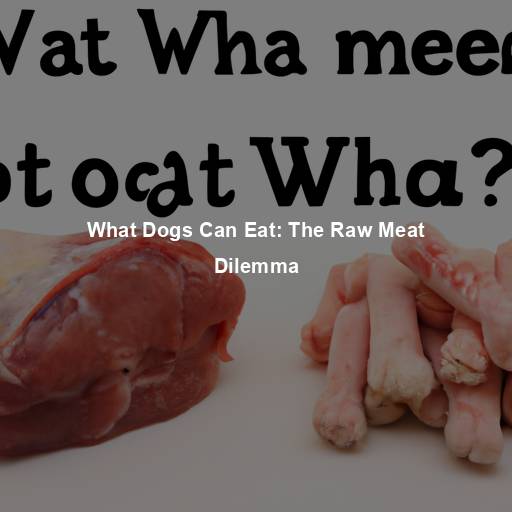Why Do Dogs Lick You: Unraveling the Mystery Behind Canine Affection
Last Updated on July 17, 2023 by Evan
Contents
- 1 The Language of Love: Decoding Dogs’ Licking Behavior
- 1.1 The Nature of Canine Licking
- 1.2 Expressing Love and Affection
- 1.3 Maintaining Social Bonds
- 1.4 Seeking Attention and Interaction
- 1.5 Tasting and Exploring
- 1.6 Soothing and Self-Calming
- 1.7 Instinctive Behavior and Imprinting
- 1.8 Health and Hygiene
- 1.9 The Power of Pheromones: Communication Through Licking
- 1.10 Positive Reinforcement: Licking as a Learned Behavior
- 1.11 Licking as a Social Tool: Understanding Canine Etiquette
- 1.12 The Influence of Individual Temperament and Personality
- 1.13 Addressing Excessive Licking: When to Seek Professional Help
- 1.14 Respecting Boundaries: Setting Limits for Licking Behavior
- 2 Embrace the Love, Cherish the Bond
- 3 The Language of Licks: Understanding Your Dog’s Individuality
- 4 Embrace the Enigmatic Lick: A Testament to Canine Love and Connection
- 5 FAQs – Why do dogs lick you?
The Language of Love: Decoding Dogs’ Licking Behavior
As pet owners, we’ve all experienced it – the wet, slobbery kisses and affectionate licks bestowed upon us by our beloved furry companions. But have you ever wondered why dogs lick us? Is it a sign of love, submission, or simply an instinctive behavior? In this article, we will delve into the fascinating world of canine affection and unravel the mystery behind why dogs lick their human counterparts.
The Nature of Canine Licking
The act of licking is an instinctual delight for our furry friends, woven intricately into their ancestral tapestry. Even from their earliest moments, nestled in the maternal embrace, puppies are lovingly tended to with the tender touch of their mother’s tongue. This tender ritual not only builds a strong foundation of trust, but also cultivates a deep sense of belonging in their hearts. As these adorable creatures traverse the journey of life, their tongues become a language of their own, expressing emotions, forging relationships, and fostering a vibrant community of wagging tails.
Expressing Love and Affection
One of the most common reasons why dogs lick us is to express their love and affection. Licking is a way for them to show their attachment, as well as to seek attention and physical contact. When your dog licks you, it releases endorphins, creating a sense of pleasure and reinforcing the bond between you.
Maintaining Social Bonds
In the wild, wolves and other canids often engage in mutual grooming as a way to strengthen social bonds within the pack. Domestic dogs have retained this behavior, and when they lick us, they are essentially grooming us as a form of social interaction. By licking, they are reinforcing the social hierarchy and showing their trust and acceptance.
Seeking Attention and Interaction
Dogs, these charming creatures of companionship and camaraderie, possess an insatiable longing for social connections and lively interactions. The age-old ritual of their affectionate licks serves as a peculiar doorway to their enigmatic desires and an ardent plea for your undivided attention. Through these tender gestures, they yearn for mirthful playtimes, gentle caresses, or even just a heartfelt recognition, ultimately unveiling their innate knack for fostering social bonds and igniting the spark of connection with you.
Tasting and Exploring
A dog’s sense of taste is far more developed than ours. Licking not only allows them to taste the saltiness of our skin but also enables them to explore and gather information about their surroundings. They can detect different scents and even subtle changes in our body chemistry through the taste receptors on their tongues. So, next time your dog licks you, remember that they are also gathering valuable information about you and their environment.
Soothing and Self-Calming
Similar to humans, dogs are not immune to the burdens of stress and anxiety. In their bewildering world, licking emerges as a peculiar outlet for solace and self-assurance. This curious act unlocks a cascade of soothing endorphins, providing our canine counterparts with a coping mechanism to navigate the treacherous realms of anxiety-ridden scenarios. Should your furry companion engage in an excessive or contextual licking frenzy, it could potentially serve as a signpost, suggesting a relentless pursuit of comfort and a valiant effort to tame the unruly beast of anxiety.
Instinctive Behavior and Imprinting
From the moment they enter this world, dogs possess an innate inclination towards licking that is woven into their very genetic fabric. The initiation of this behavior lies in its primal purpose of stimulating their mother’s milk production, a vital aspect of their early survival. As time weaves its tapestry, this licking ritual metamorphoses into a language all its own, allowing dogs to communicate and solidify their social bonds. Thus, we witness how an act as simple as licking, deeply engraved in their nature, unfurls a multitude of functions.
Health and Hygiene
While licking is primarily a behavior associated with affection and communication, it also serves a practical purpose – keeping themselves clean. Dogs use their tongues to groom their fur, removing dirt, debris, and parasites. Similarly, when they lick their human companions, they may be trying to keep us clean as well. However, it is important to note that excessive licking can sometimes be a sign of underlying health issues, such as allergies or skin irritations, and should be monitored closely.
The Power of Pheromones: Communication Through Licking
Beyond the visible signs of affection and social bonding, licking also serves as a form of communication for dogs. They have scent glands in their saliva that release pheromones, which carry important messages to other dogs and even humans. These chemical signals provide information about the licker’s identity, emotional state, and territory. When a dog licks you, they are essentially leaving their scent on you, marking you as part of their pack and signaling their presence to others.
Positive Reinforcement: Licking as a Learned Behavior
It’s fascinating how dogs seem to have cracked the code of positive reinforcement. They have this uncanny ability to connect their delightful licking behavior with getting attention or affection in return. Just like little pups, they learn that showering their mother’s face or their adorable littermates with licks leads to a cascade of positive responses like attention, grooming, or access to valuable resources. And the remarkable thing is, this cleverness doesn’t stop with their furry family – it extends to humans too, as they realize that licking can also evoke those same delightful reactions.
Licking as a Social Tool: Understanding Canine Etiquette
In the captivating realm of canines, the enigmatic act of licking holds a profound significance, acting as the invisible thread that weaves together intricate social connections and establishes an unwritten hierarchy. The tender genesis of this ritual begins in the early stages of a puppy’s life, where tiny tongues gently caress the face of their maternal figure to convey their heartfelt needs and entreat for nurturing. Adult dogs, too, partake in this enigmatic behavior, delicately anointing the faces of submissive companions, a poignant gesture of solace and acceptance. When dogs turn their affectionate gaze towards their human counterparts, they could be revealing a yearning to foster a harmonious bond, an instinctual effort to reinforce their place within the familial pack.
The Influence of Individual Temperament and Personality
Every dog has their own distinct personality, which greatly affects how they choose to express themselves through licking. Some dogs may lavish you with their wet kisses, eagerly seeking attention and affection, while others may be more discreet in their displays of love. By delving into your furry friend’s distinct temperament and preferences, you can unravel the mysterious code behind their licking habits and gain a deeper understanding of their unique character.
Addressing Excessive Licking: When to Seek Professional Help
While licking is a natural behavior for dogs, excessive or compulsive licking can sometimes indicate an underlying issue that requires professional attention. If your dog excessively licks themselves, objects, or people to the point of causing injury or distress, it is important to consult with a veterinarian or a certified animal behaviorist. They can help determine the cause of the behavior, whether it is due to medical conditions, anxiety, or other underlying factors, and provide appropriate guidance and treatment.
Respecting Boundaries: Setting Limits for Licking Behavior
As pet lovers, we all cherish the slobbery kisses from our adorable companions, but let’s face it, there are times when we need them to understand the concept of personal bubble. So, here’s the scoop: consistent and positive reinforcement training is the key to transforming your dog into a respectful cuddle buddy. By implementing commands like “no lick” and providing distractions such as toys or playtime, you can redirect their eager tongues and establish some much-needed boundaries. It may take a bit of trial and error, but the end result will be a happier and more well-behaved pooch.
Embrace the Love, Cherish the Bond
At first glance, the act of dogs licking may seem simple and straightforward. However, a closer look reveals a wide array of intriguing motivations that drive this behavior. From expressing affection and reaffirming social bonds to engaging in subtle forms of communication, dogs use their tongues as a means of connection. As pet owners, understanding the underlying reasons behind this behavior allows us to deepen our bond with our furry companions and appreciate the unique language of love they speak through their slobbery kisses.
Oral Health and Dental Hygiene
Did you know that your furry companion has a secret dental hygiene tool? It turns out that a dog’s tongue does more than just give wet kisses and make adorable slurping sounds. The rough texture of their tongue acts as a natural toothbrush, helping to remove loose fur, dirt, and debris from their coats and even from our skin. As if that wasn’t impressive enough, the enzymes present in their saliva can also aid in fighting off harmful bacteria that may gather in their mouths.
Wound Healing and Soothing Properties
Dive into the mysterious world of dog saliva, where swirling enzymes and proteins converge to create a captivating tale of antibacterial prowess and anti-inflammatory genius. As these furry healers lick their wounds, a symphony of cleaning agents dances delicately on the affected areas, sparking a perplexing journey towards rejuvenation. With each lick, blood flow awakens, and the production of growth factors suddenly takes center stage, faithfully nurturing the healing process. But tread carefully, dear reader, for excessive licking can weave a tangled web, delaying the very healing it once promised, or even inviting mischievous bacteria to dance upon the wound.
Stress Reduction and Emotional Well-being
Dogs have their own unique ways of finding solace, with licking being one of them. The rhythmic motion and the rush of endorphins that come along with licking can work wonders in soothing their nervous system and reducing stress. However, it’s important to keep an eye on your furry friend if they start indulging in excessive licking, as it could be a tell-tale sign of underlying anxiety or emotional distress. Taking the time to identify and address the root cause, while offering them the necessary support and training, can make a world of difference in their well-being.
Bonding and Trust-building
Discover the fascinating world of canine communication and the mysterious bond between dogs and their human counterparts. Uncover the latent meanings behind a dog’s lick, as it goes beyond a simple gesture and delves into profound connections of trust, acceptance, and an innate desire to forge a lasting connection. Science unravels the complexity of this act, revealing the release of oxytocin, the captivating “love hormone,” in humans, cementing a bond that transcends species and leaves us in awe of the unique relationship we share with our loyal companions.
Allergy Sensitization and Hygiene Considerations
While not directly related to the health benefits of licking, it’s worth mentioning that some individuals may have allergies or sensitivities to dog saliva. Proteins present in a dog’s saliva can trigger allergic reactions in susceptible individuals. Additionally, allowing your dog to excessively lick your face or open wounds may introduce bacteria or pathogens into your system. It’s important to strike a balance between enjoying the affectionate behavior and maintaining good hygiene practices.
Training and Redirecting Licking Behavior
Is your furry friend showering you with more licks than you can handle? Do not fret, for there are effective strategies to tackle this slobbery situation head-on. By employing redirection and training techniques, you can gently steer your canine companion towards more desirable behaviors. Encouraging alternative activities or offering engaging toys can divert their attention and curb the excessive licking.
The Language of Licks: Understanding Your Dog’s Individuality
Like snowflakes falling from the sky, every dog holds within them a captivating blend of quirks and idiosyncrasies. Just as their personalities diverge, so too does their licking prowess. While some furry friends may bestow a deluge of slobbery love upon all they encounter, others might take a more measured approach in their affectionate gestures. To truly comprehend the mystifying world of canine licks, one must unlock the code to their unique individuality and decode the language of their lick-centric antics.
Observe your dog’s body language and context to decipher the underlying motivations behind their licking. Are they seeking attention, showing submission, or trying to communicate something specific? By paying close attention to their non-verbal cues and the overall context, you can develop a deeper understanding of what their licks mean in different situations.
Embrace the Enigmatic Lick: A Testament to Canine Love and Connection
The intriguing ritual of a dog’s lick continues to captivate and bewilder, leaving us in a state of awe and warmth. It encompasses a kaleidoscope of gestures, from a tender stroke upon our hand to an exuberant caress across our face. These expressions of affection stand as a tangible reminder of the profound connection and unbreakable devotion shared between humans and their four-legged companions.
So, the next time your dog showers you with wet kisses, take a moment to appreciate the depth of their affection and the beautiful language they speak without words. Embrace the enigmatic lick and cherish the extraordinary connection you share with your canine companion. After all, in the world of dogs, a lick can speak volumes.
FAQs – Why do dogs lick you?
Why do dogs lick people?
Ah, the enchanting world of canine communication! Have you ever pondered why our lovable furry friends grace us with their slobbery kisses? It turns out that for dogs, licking is not just a mere act of affection—it’s a complex dance of emotions and social connection. Be it their instinctual grooming tendencies or the yearning for attention, our four-legged companions navigate the realm of licks to explore their surroundings and gather valuable tidbits about the world around them. So the next time your pooch plants a wet one on you, know that it’s their unique way of conversing and forging a deeper bond with their human pack. Fascinating, isn’t it?
Is it normal for dogs to lick humans?
Yes, it is completely normal for dogs to lick humans. Licking is a common behavior among dogs, and it is considered a sign of their overall well-being and social interaction. It is essential to remember that each dog is different, and some may engage in licking more frequently than others. However, excessive licking or obsessive behavior should be monitored and addressed, as it may indicate underlying health or behavioral issues.
What does it mean when a dog licks you?
Unlocking the enigmatic world of doggy licks, deciphering their cryptic messages, begs the question: what’s really going on when Rover slathers you with a soppy kiss? From tender gestures of endearment to unabashed pleas for connection, these saliva-filled smooches can leave even the most discerning pet parent perplexed. Are they signs of adoration, gratitude, or simply a curiously piqued palate? As we delve into the depths of canine communication, we unearth the intricate ties between taste, scent, and longing, revealing the multifaceted nature of these slobbery salutations. Prepare to unlock the secrets behind every lick, and perhaps find yourself lost in a world of bewilderment and awe.
How can I stop my dog from excessive licking?
If your precious fur companion’s excessive licking becomes a tiresome ordeal, fear not, for there are a plethora of bewildering strategies at your disposal. First and foremost, it is imperative to guarantee that your furry friend is adequately engaged both physically and mentally, through invigorating exercise and interactive play. The abyss of boredom and anxiety can often serve as catalysts for the unrelenting licking, thus sating the insatiable desire for mental satisfaction can aid in deescalating this perplexing behavior. Furthermore, one can attempt to divert their attention by offering suitable chew toys or delectable treats, subtly urging their licking fixation towards more agreeable objects. In cases where your dog’s licking is an outward manifestation of profound anxiety or stress, it is wise to seek the wise counsel of a skilled veterinarian or an esteemed professional dog trainer for guidance on navigating this enigmatic conundrum.
Can dogs’ licking be harmful to humans?
When it comes to the age-old question of whether dogs’ licks are harmless or problematic, the answer isn’t as clear-cut as one might hope. While it’s generally believed that dog saliva won’t cause any major harm to humans, it’s crucial to exercise caution and prioritize hygiene. After all, our furry friends’ mouths can harbor a variety of bacteria and parasites that we’d rather not invite into our bodies. To minimize the risk of infection or other health complications, it’s advisable to discourage excessive licking of sensitive areas and to diligently cleanse our hands after any close encounters with doggy slobber, particularly if we have any open cuts or wounds. So, while doggy kisses are undoubtedly adorable, it never hurts to err on the side of caution and keep ourselves protected.

